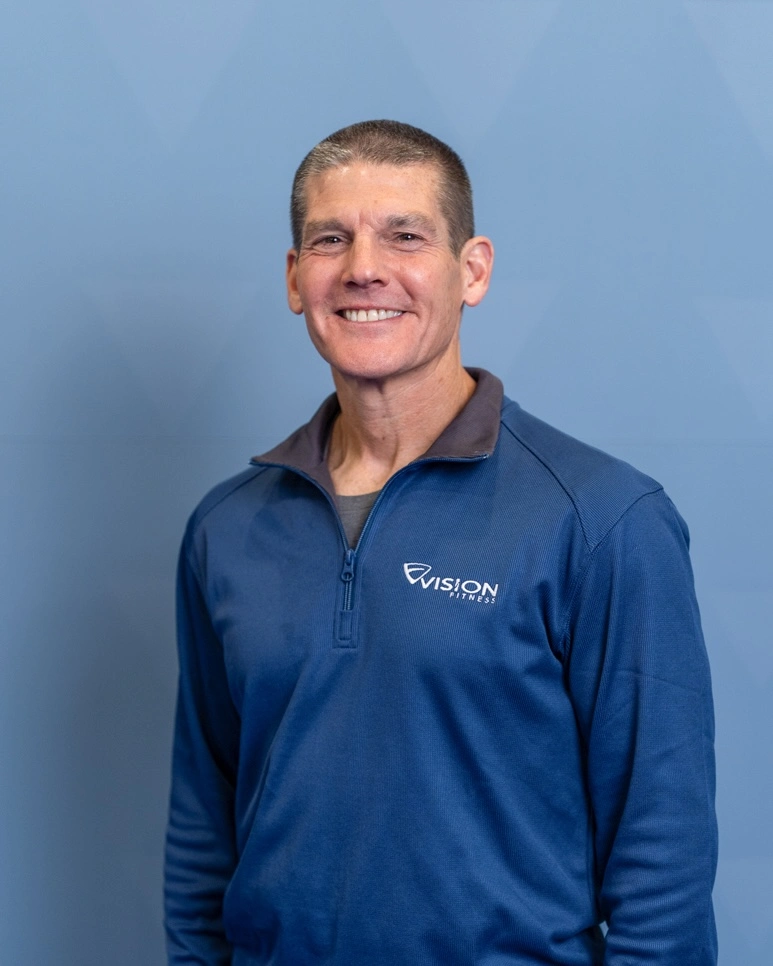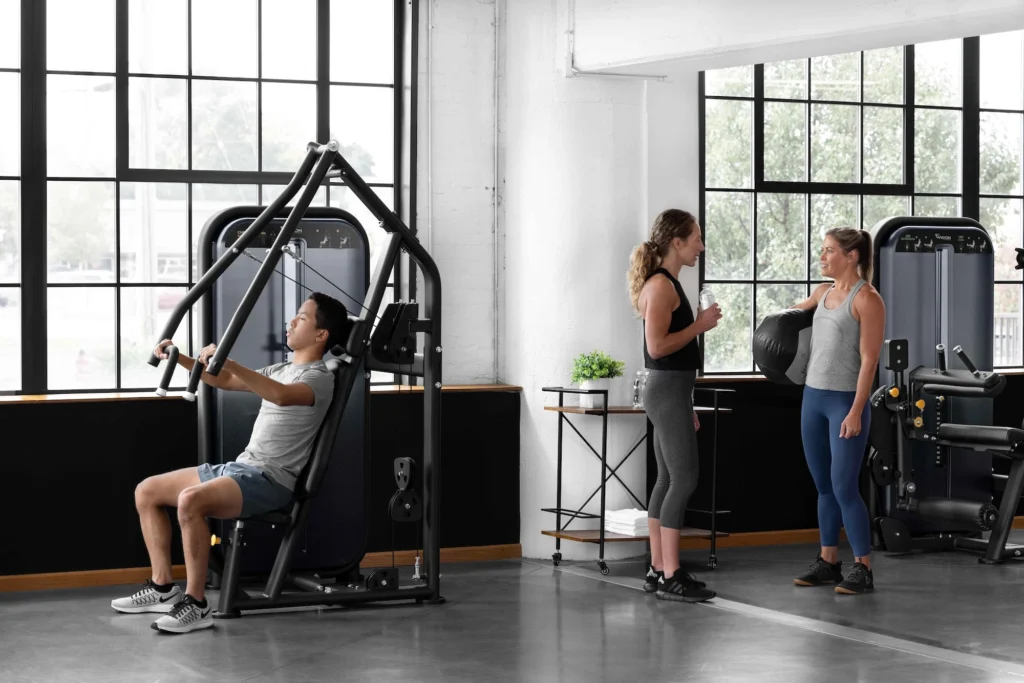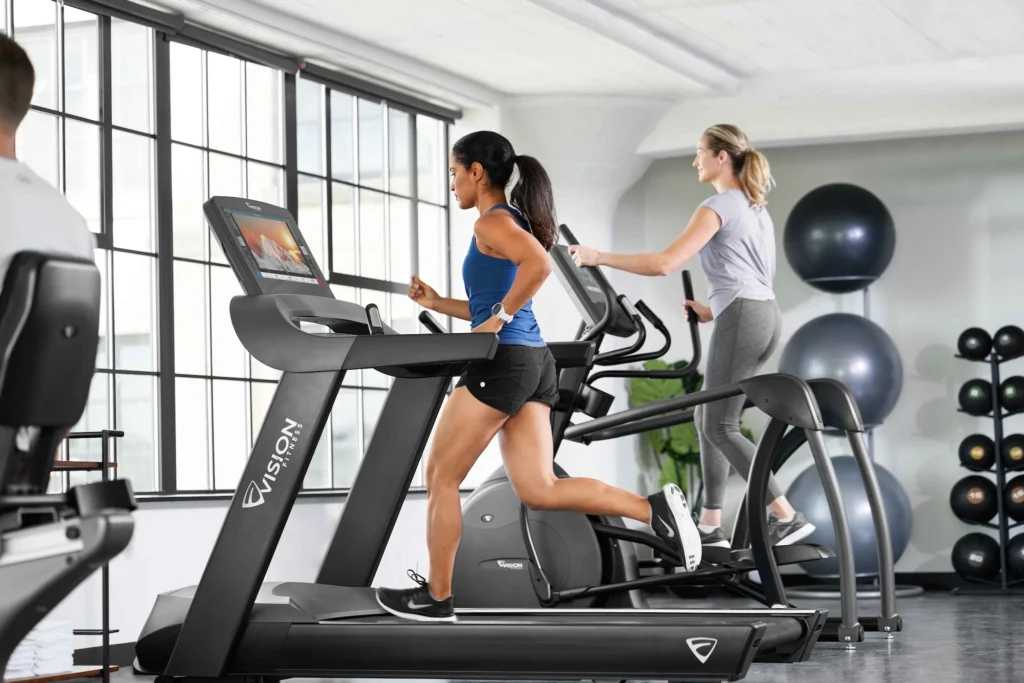In a fitness landscape increasingly dominated by hyper-connected machines and flashy features, simplicity might just be the most disruptive idea of all. Vision Fitness is doubling down on ease of use, reliability and design that serves a broader demographic — from hotel guests and casual users to wellness-minded travelers. As many facilities stretch their budgets and operate with leaner staff, Vision’s focus on purposeful, approachable equipment is gaining greater relevance.
Athletech News spoke with Vision Fitness General Manager Chris Torggler about the brand’s core values, product design philosophy and why simplicity is not a step back, but a strategic leap forward.
The following conversation has been lightly edited for clarity and length
Athletech News (ATN): In an era where high-tech, hyper-connected machines dominate headlines, how is Vision Fitness carving out space by prioritizing simplicity and user experience?
Chris Torggler (CT): Simplicity is one of our three core values and guides everything we do, from interface design to mechanical engineering and product development. As the industry rushes to add flashy tech and endless customization, we see a growing need for equipment that just works. Not every facility wants or needs a machine that feels like a smart TV. For many operators and users, those features become friction points.
We’re carving out space by focusing on purposeful, intuitive design that reduces complexity without sacrificing functionality. Simplicity isn’t a lack of innovation; it’s a smarter form of it. We saw a need in the market, which is why we’re continuing to invest in the Vision Fitness brand, launching an additional 50 new products over the next year.

ATN: How does your design philosophy serve broader demographics like hotel guests, wellness-minded travelers or casual gym-goers who may not want or need complex interfaces?
CT: We design with the everyday user in mind, not just athletes or early adopters. Our UI is clean and familiar, so a hotel guest on vacation or a new apartment resident can get moving within seconds, no tutorial required. That ease of use builds confidence and keeps people coming back. We also intentionally design our equipment to give users of all sizes an ideal fit.
A few examples:
Open design and low step-on height make it easy to get started.
Contact grips and a wireless receiver offer simple heart rate tracking.
Our Ascent Trainer features an adjustable incline, variable stride length and multi-position handlebars for a personalized experience.
Narrow pedal spacing on our Suspension Elliptical promotes better posture.
The intuitive LED console allows users to start a workout by simply pressing “Go.”
ATN: How do you strike a balance between offering modern functionality and avoiding tech overload that can overwhelm or alienate users?
CT: Modern functionality doesn’t have to mean feature overload. We integrate tools users actually want, like Bluetooth, streaming apps and interactive programming, without forcing a learning curve. Our focus is purposeful innovation, not tech for tech’s sake.
Fitness trends evolve, and we evolve with them, but not at the expense of user experience. Even thoughtful upgrades like self-balancing pedals or an accessory tray for a phone make a difference without overwhelming the user. Our design ensures people are positioned correctly and comfortably to move effectively, without needing a tech tutorial before every workout.
ATN: From a facility management standpoint, how does simplicity in both equipment operation and servicing help reduce operational headaches?
CT: For properties with limited staff, complicated equipment isn’t just inconvenient, it’s a liability. Vision Fitness prioritizes preventative design. Our builds are durable, easy to maintain and engineered for quick servicing. That means fewer service calls and more time for guests and residents.
This is critical in a market where commercial fitness facilities often spend $500 to $5,000 per machine annually on unplanned repairs. Complex systems frequently require specialized service, which drives up costs and downtime. For light-staffed properties, fitness equipment oversight may fall on someone with no fitness background — just one of many hats they wear. Simplicity matters.

ATN: Durability and downtime are often overlooked in flashy product marketing. How does Vision approach equipment reliability, and why is that a critical differentiator today?
CT: Reliability isn’t just a bonus, it’s a baseline for guest satisfaction. There’s nothing worse than getting up early on vacation, heading down to the fitness center, only to find that 2 of the 3 treadmills are out of order, the third is being used, and now you’re left trying to rework your workout plan for the day. And for dues-paying facilities, unplanned downtime can mean thousands of dollars lost.
This is why reliability is our second core value. Vision Fitness is known for commercial-grade durability that stands up to real-world use. Our equipment is tested for longevity – more than four times the industry standard — and designed with fewer failure points, which means fewer disruptions.
Given current budget pressures, many facilities are extending the life of their fitness equipment, keeping cardio for 8–10 years and strength for 10–12. That means durability isn’t just a bonus, it’s essential.
ATN: How does Vision’s approach to interface design help create more inclusive and approachable fitness spaces?
CT: We keep interfaces simple, accessible and non-intimidating. Whether someone is 65 or 25, returning to fitness or just getting started, our designs make it easy to engage.
Intuitive navigation for easy workout starts
Bright white LED display for clear, real-time feedback
Support for heart rate straps and FTMS-compatible training apps
No sign-up, log-in or app downloads required
That level of approachability helps people feel confident and welcome, regardless of experience.
ATN: How do your cardio and strength product lines deliver value for operators who may not have the budget — or the need — for tech-laden equipment?
CT: Value is our third and final core value. When it comes to our fitness equipment, a combination of high-quality parts and time-tested platforms results in products that outlast our customers’ expectations.
Our products deliver commercial performance without the premium price tag of high-tech alternatives.
In a climate where every dollar must stretch further, the challenge isn’t variety – it’s identifying equipment that delivers on both user expectations and long-term operational goals. For facilities such as multifamily or hotel fitness centers, with limited budget and high expectations, every piece of equipment must pull its weight.
ATN: What would you say to designers or owners who believe that “simpler” means “less advanced”?
CT: Simplicity is a design innovation. We believe true innovation lies in clarity, not complexity. It’s easy to tack on flashy features and call it advanced, but far harder to engineer equipment that feels instantly familiar yet delivers long-term value. For us, innovation means removing barriers. And in today’s market, simplicity doesn’t have to be a compromise; it’s a competitive edge.



